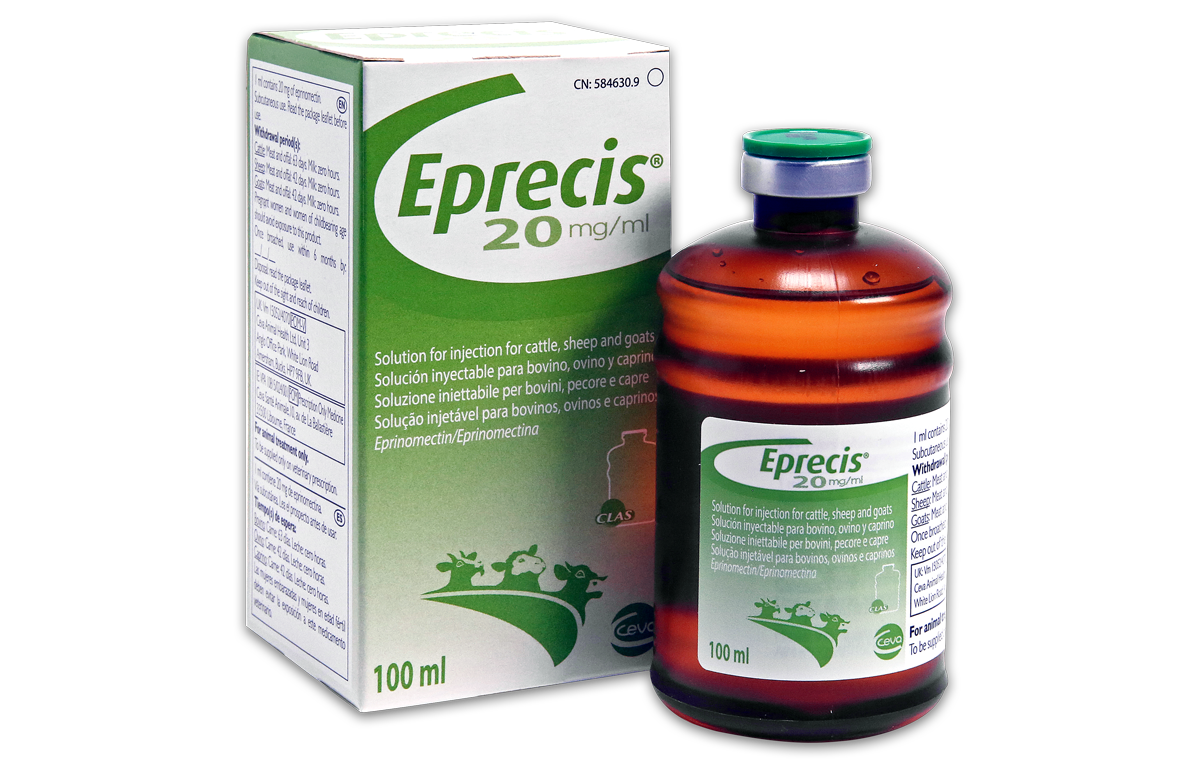Scientific article
Efficacy of a subcutaneous injection of eprinomectin in lactating goats experimentally challenged with gastrointestinal and lungworms
Authors
D. Achard P. Pinho S. Thomson D. Reddick R. Brunner D. Campbell A. Beck N. Isaka A. Trotel H. Karembe
Publication information
World Buiatric Congress 2024
Objectives
Health and productivity of dairy goats continue to be impacted by gastrointestinal nematodes (GIN) and lungworms (LW). Eprinomectin (EPN) is frequently selected for treatment as it is considered e fective and without milk withdrawal period. However, some factors such as the lactation status can have an impact on EPN pharmacokinetics and potentialy its e ficacy. For instance, reduced bioavailability has been reported for topical EPN in lactating goats when compared to dry goats (Dupuy et al., 2001). To evaluate if this can alter the e ficacy of an injectable solution of eprinomectin (Eprecis® 2%, Ceva Santé Animale), a study was performed in lactating goats using the dose currently registered in ca tle, sheep, and goat (0.2 mg/kg).
Materials and methods
This study was a blinded, randomized, controled trial performed according to VICH guidelines (GL7 and GL14). The protocol was reviewed by the Moredun Animal Welfare and Ethical Review Board, and the study run under the UK Home O fice Project Licence (No PFA7E7AD6) folowing Animal Scientific Procedures Act 1986. Eighteen (18) worm free lactating goats from a conventional dairy goat farm were included and experimentaly chalenged on Day-28 with a mixed culture of infective gastrointestinal and lung nematode larvae (Haemonchus contortus, Trichostrongylus colubriformis, Teladorsagia circumcincta, Dictyocaulus filaria). Average numbers of parasites inoculated complied with the recommended numbers for parasite infection models for anthelminthic evaluation in goats. The isolates used were recent European strains isolated from field (except T. colubriformis from laboratory isolate). At D-1, faecal samples were colected to confirm patent infestation in al animals (minimum > 150 EPG). Fifteen animals were ultimately enroled in the study, as three goats shown a faecal egg count below the shedding threshold. On D0, goats were randomly alocated based on their D-1 faecal egg count (FEC) and on D0 body weight into two groups of nine goats; group 1 was treated with Eprecis® 2% at 0.2 mg/kg BW by subcutaneous injection while group 2 remained untreated. The goats were milked once daily, and their general health was assessed twice daily from arrival until the end of study. Any sign of abnormal behaviour or a change in feeding habits was reported. Faecal egg shedding was regularly monitored from D0 to D14, with a total of six faecal egg counts, performed at D3, 5, 7, 9, 11 and 14. On D14, al goats were euthanised as required by VICH guidelines, and the abomasum, smal intestine and lungs removed, processed and sub sampled, to record the number and species of worms. To assess the e fect of Eprecis® 2%, the nematode counts at necropsy of treated animals were compared to those of control animals, using Wilcoxon Tests, with significance set at the 0.05 level. The e fectiveness of Eprecis® 2% against each worm species was calculated as the diference in geometric means of the counts between the control group and the treatment group at D14, expressed as a percentage based on the geometric mean of the control group counts. Statistical analyses were performed using SAS version 9.4 software.
Results
The treatment was wel tolerated. After treatment, mean FEC decreased in the treated group and remained lower than 3 EPG until the end of the study while mean FEC in the control group remained higher than 849 EPG. At D14, goats in the treated group had very limited or zero total worm counts whereas al animals from the control group had high worm burden. Measured e ficacy was 100.0% against H. contortus and T. colubriformis, 99.9% against T. circumcincta and 96.8% against D. filaria. The mean body weights in both groups increased slightly from D0 to D14 (respectively of +2.8 kg in the treated group and +1.6 kg in the control group).
Conclusions
Eprinomectin injection (Eprecis® 2%), administered at the label dose (0.2 mg/kg) is highly e fective and safe against gastrointestinal and lungworms in lactating goats. These findings are in line with the results obtained after experimental GIN infection and treatment at label dose with Eprecis® 2% in dry goats (Brique-Pelet et al., 2017) and thus suggest that lactational status of goats does not impact the e ficacy of this injectable eprinomectin solution.
Publication file:





